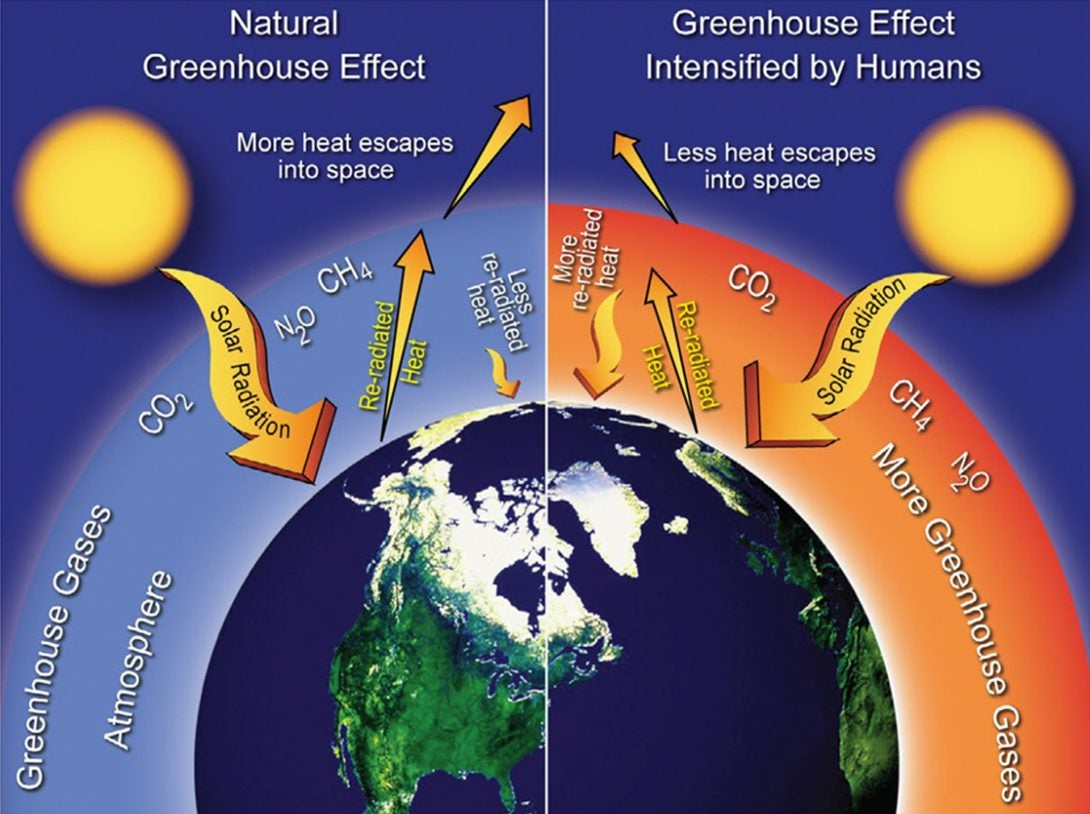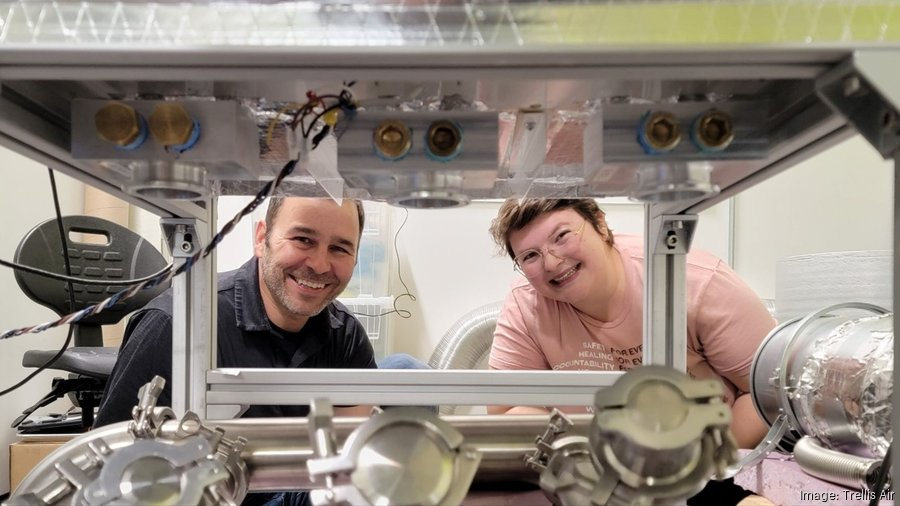Climate change is not just a distant problem; it’s a pressing reality that is transforming ecosystems worldwide, including at Harvard Forest. Researchers like senior ecologist David Orwig and education director Clarisse Hart have witnessed firsthand the profound impact of climate change on forest ecosystem changes over the years. Warming winters have led to the alarming decline of hemlock trees, while new species like black birch thrive, starkly altering the landscape. This shift exemplifies the urgency of climate research, as scientists work tirelessly to monitor these transformations and understand their implications. The vibrant, diverse life within the forest is at the mercy of changing weather patterns, highlighting the intricate balance that climate change disrupts in our natural surroundings.
The phenomenon of global warming has wrought notable alterations in our forested regions, making the concept of ecological evolution more urgent than ever. The gradual warming of temperatures has triggered a transformation in forest dynamics, impacting everything from species composition to soil health. This climatic transition, often referred to as ecosystem adaptation, is reshaping habitats as some plant species flourish while others, like the revered hemlock, face a precarious future. Beyond the immediate changes, the long-term consequences of these shifts pose significant challenges for conservation efforts and wildlife management. Understanding these changes requires an in-depth analysis of past data and a commitment to ongoing climate research to safeguard our remaining natural resources.
Understanding Climate Change Through Harvard Forest Research
The research conducted at Harvard Forest serves as a critical window into understanding the impacts of climate change on forest ecosystems. As temperatures rise and precipitation patterns shift, scientists like Emery Boose and David Orwig meticulously document these changes. They focus on how warmer winters and increased rainfall affect the delicate balance of plant and animal life. With data collected over decades, this team is uncovering long-term trends that reveal the profound effects of climate change on biodiversity, making Harvard Forest a vital laboratory for climate research.
At Harvard Forest, each variation observed by researchers is a reflection of climate change underway, which underscores a broader narrative of ecological transformation. The decline of hemlock trees, for instance, is linked to the increasing population of the woolly adelgid, a pest thriving in the warmer climate. This decline not only affects the hemlocks but reshapes the entire forest ecosystem, leading to the proliferation of other tree species like black birches. Such shifts broaden the understanding of how ecosystems respond to climate changes, prompting further research into prevention and mitigation strategies.
The Decline of Hemlocks: A Symbol of Climate Impact
The decline of hemlock trees in Harvard Forest is illustrative of the significant impacts climate change has on specific species and their ecosystems. Historically, these trees played a pivotal role in maintaining the forest’s structure and regulating temperature and soil quality. However, as our climate warms, the woolly adelgid is able to move northward, unchecked, leading to the drastic decline of this once-dominant species. This transition has profound implications for forest composition, indicating that a shift towards deciduous trees like black birch can alter the forest’s functionality in nutrient cycling and habitat provision.
Researchers express both sadness and optimism at this turning point. While David Orwig and his colleagues witness the loss of a beloved species, they also observe the resilience of the forest ecosystem as it adapts to new circumstances. The replacement of hemlocks with black birches may not yield the same environmental conditions, but it highlights nature’s ability to adapt and evolve. This ongoing change prompts critical discussions about conservation efforts, forcing scientists to reassess what future generations may experience in these altered landscapes.
Ecosystem Resilience: The Response to Climate Change
The resilience of ecosystems like those found at Harvard Forest provides a glimmer of hope amidst the challenges posed by climate change. While the shifting dynamics of flora and fauna can be alarming, scientists like Clarisse Hart emphasize the adaptiveness of these systems. Observations show that as certain species decline, others can thrive, demonstrating a level of ecological resilience. The interconnectedness of these species illustrates how ecosystems might reorganize themselves while continuing to provide essential services, such as carbon storage and habitat for various animal life.
However, this resilience comes with trade-offs. For example, while black birches may emerge in place of hemlocks, they also change the soil’s chemistry and affect water usage in the ecosystem. This disruption highlights the complexity of ecological interactions and the need for careful monitoring. Understanding these dynamics is crucial for developing effective restoration and management strategies, particularly as climate change continues to exert pressures on the environment.
Long-term Data: A Keystone for Climate Research
The extensive data collection at Harvard Forest is invaluable for comprehensively analyzing climate change trends. Researchers utilize nearly a century of temperature and precipitation records to map how gradual atmospheric shifts are influencing local ecosystems. This wealth of information allows scientists to identify patterns that may not be immediately apparent, such as the increasing frequency of intense rainfall or shifting seasonal weather patterns. This long-term perspective is essential for forecasting potential future changes and informing conservation strategies.
In contrast to short-term studies, the longitudinal data sets yield insights into natural variability and help distinguish between normal ecological fluctuations and significant, climate-induced shifts. By documenting these gradual changes over decades, researchers can better anticipate the trajectory of forest ecosystem health and resilience under continued climate stress. This approach contributes to a broader understanding of climate adaptation and informs policy decisions aimed at mitigating impacts on biodiversity.
The Role of Community in Climate Research
At Harvard Forest, the sense of community among researchers enhances the depth of climate research conducted. The shared experiences of scientists and staff create a collaborative environment where observations lead to collective insights. According to Clarisse Hart, this tight-knit community not only fosters a deeper connection to the land but also emphasizes the importance of personal narratives in scientific discovery. Each team member’s unique experiences and emotional ties to the forest help shape the research agenda, making the outcomes more compelling and relatable.
Additionally, community involvement extends beyond scientific circles to include education and outreach activities. Engaging local communities and schools fosters a broader understanding of climate change impacts and encourages public participation in research agendas. By turning their findings into educational resources, researchers can inspire the next generation to appreciate and advocate for forest conservation efforts, ultimately helping nurture a more informed public regarding climate change.
The Human Connection to Changing Ecosystems
The emotional connection researchers have with Harvard Forest enhances their commitment to understanding climate change. Scientists like David Orwig embody this sentiment as they recount personal experiences with nature—highlighting how the shifts in climate and ecosystem dynamics resonate on a human level. This personal narrative adds depth to the cold data, showcasing the landscape’s transformation through a lens of personal loss and hope. As future generations will face even more drastic changes, the shared stories emphasize the urgency of recognizing and addressing these trends.
These connections foster a unique perspective for scientists as they navigate the rigors of climate research. In some instances, it becomes pivotal for them to communicate not just the science of climate change but the emotional weight of witnessing profound environmental shifts. This connection serves to bridge the gap between scientific inquiry and public awareness, enhancing the narrative around climate change’s implications for everyday life. The human stories intertwined with climate research can drive home the reality of these changes, providing a compelling call to action.
Shifting Baselines and Future Perspectives
The concept of shifting baselines is particularly relevant in discussions of climate change and its impact on ecosystems. With each generation, personal experiences shape perceptions of what constitutes a ‘normal’ environment. For younger generations who may never encounter an untouched hemlock forest, their reality may lack the richness of biodiversity that previous generations took for granted. This presents a challenge for researchers, as Missy Holbrook emphasizes the importance of conveying the experiences of a changing landscape to inspire future conservation efforts.
Acknowledging shifting baselines allows scientists to redefine their approaches to ecological preservation as they work to not only document environmental changes but also reconnect younger generations with the natural world. Engaging youth in climate discussions through immersive experiences in places like Harvard Forest can foster appreciation and advocacy for preservation initiatives. By bridging historical perspectives with contemporary challenges, researchers can mobilize a new generation to enact positive change in response to climate impacts.
The Impact of Climate on Forest Health and Biodiversity
The influence of climate change on forest health and biodiversity is evident within the Harvard Forest ecosystem. As warmer climates alter species interactions, the ability of trees like hemlocks to survive and thrive is compromised. Consequently, cascading effects ripple through ecosystems, affecting wildlife and altering nutrient dynamics. Monitoring these changes closely is critical to understanding the ecological balance and the complex interdependencies present in forest habitats.
Furthermore, as species composition changes, the potential for biodiversity loss increases. The changing dynamics in forest ecosystems due to climate pressures could lead to declines in certain species while offering opportunities for others to flourish. Researchers must pay heed to these shifts and analyze how interventions, such as promoting species diversity or introducing natural pest controls, can sustain forest health in the face of ongoing climate change.
Empowering the Next Generation Through Education and Advocacy
At Harvard Forest, education and advocacy intertwine to empower future leaders in climate research. Programs designed to engage students in hands-on fieldwork cultivate a sense of stewardship and responsibility towards the environment. This experiential learning not only enhances students’ understanding of climate change processes but also encourages them to become advocates for environmental awareness within their communities. By fostering active learning, students develop a personal connection to the ecosystem, deepening their commitment to protecting it.
Moreover, as emerging leaders in climate science, these students are positioned to carry forward the initiatives aimed at mitigating the impacts of climate change. Their contributions can shape scientific discourse, enhance conservation strategies, and promote sustainable practices. As they step into roles of responsibility, equipping them with knowledge and direct experiences at Harvard Forest will ensure that they approach future environmental challenges with the boldness and creativity needed to drive meaningful change.
Frequently Asked Questions
What are some observable impacts of climate change at Harvard Forest?
At Harvard Forest, the observable impacts of climate change include a shift in forest ecosystem changes, such as the decline of hemlock trees and the flourishing of black birch. Researchers have documented dramatic transformations in the forest’s composition, including increased light penetration and a new understory layer since the 1990s.
How does climate research at Harvard Forest contribute to our understanding of ecological changes?
Climate research at Harvard Forest contributes significantly to understanding ecological changes by providing extensive historical data on temperature and precipitation patterns. This data allows scientists to analyze long-term climate trends and their effects on forest ecosystems, thus enhancing our knowledge of how climate change alters habitats and species.
What role do invasive species play in the impact of climate change on forest ecosystems at Harvard Forest?
Invasive species, such as the woolly adelgid, play a detrimental role in the impact of climate change on forest ecosystems at Harvard Forest. The warmer winters caused by climate change allow these pests to thrive, leading to the decline of hemlock trees, which are vital to the forest’s ecological balance.
Why are hemlock declines significant in climate change studies at Harvard Forest?
Hemlock declines are significant in climate change studies at Harvard Forest because hemlocks are foundational species that shape the forest ecosystem. Their loss affects soil chemistry, nutrient flow, and the overall microenvironment, making the study of their decline essential for understanding the broader impacts of climate change on forest health.
How are climate change effects expected to influence future generations according to Harvard Forest scientists?
Harvard Forest scientists express concern that the effects of climate change will influence future generations by shifting their baseline of normalcy. Without experiencing traditional forest ecosystems, younger generations may lack the context to understand the devastating changes and potential loss of biodiversity caused by climate change.
What kind of adaptations do forests like Harvard Forest exhibit in response to climate change?
Forests, including Harvard Forest, exhibit resilience and adaptations in response to climate change through the emergence of faster-growing species like black birch. These adaptations alter the forest structure, nutrient cycling, and water usage, demonstrating the dynamic reactions of forest ecosystems to climatic shifts.
What is the significance of ongoing climate research conducted at Harvard Forest for future climate change policies?
Ongoing climate research at Harvard Forest is significant for future climate change policies as it provides empirical evidence of ecosystem changes and the effects of climate variables. This research informs conservation strategies and helps policymakers understand how to mitigate further environmental degradation.
How does the changing climate at Harvard Forest affect local wildlife?
The changing climate at Harvard Forest affects local wildlife by altering habitats and food availability. As hemlocks decline, the associated wildlife that relies on these species for shelter and food may be adversely impacted, leading to changes in species composition and biodiversity in the area.
What measures are being taken to combat the effects of climate change at Harvard Forest?
Measures being taken to combat the effects of climate change at Harvard Forest include extensive research on soil heating and gas exchange, as well as monitoring invasive species and experimenting with biological controls. These efforts aim to understand and potentially mitigate the impacts of climate change on forest ecosystems.
How do researchers at Harvard Forest monitor and document climate change effects in their studies?
Researchers at Harvard Forest monitor and document climate change effects through numerous studies that include long-term data collection on temperature, precipitation, and ecosystem responses, as well as by deploying advanced instrumentation to analyze forest-atmosphere interactions.
| Key Points |
|---|
| Harvard Forest is a vital climate change research site with data dating back to the 1960s. |
| Senior ecologists observe significant changes in the ecosystem, such as a decline in hemlocks and an increase in black birches. |
| The forest’s microenvironment and species composition are shifting due to climate change, affecting soil chemistry and nutrient flow. |
| Long-term climate trends indicate a warmer and wetter climate predicted by scientists, evidenced by local data. |
| Research includes experiments on soil heating and gas exchange to study ecological responses to temperature changes. |
| Climate change’s effects are tangible for researchers and the local community, with no indication of slowing down. |
| Future generations are at risk of having a different baseline understanding of what forests should look like due to changing climates. |
Summary
Climate change is drastically altering ecosystems, as exemplified by the ongoing research at Harvard Forest. The significant transformation of native species, such as the decline of hemlocks and the rise of black birches, showcases the real-time effects of climate change on biodiversity and forest structure. This firmly underscores the urgency for active climate change mitigation and adaptation strategies to preserve natural habitats for future generations.



